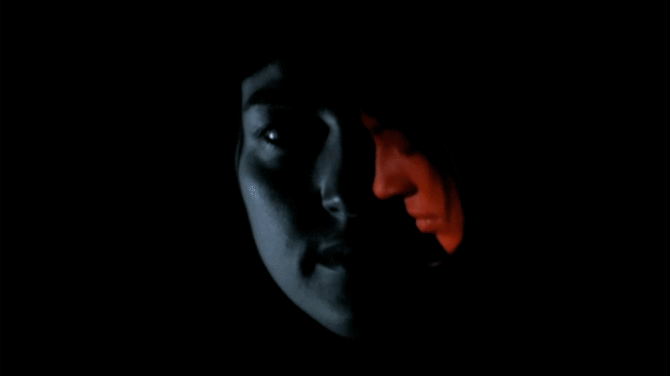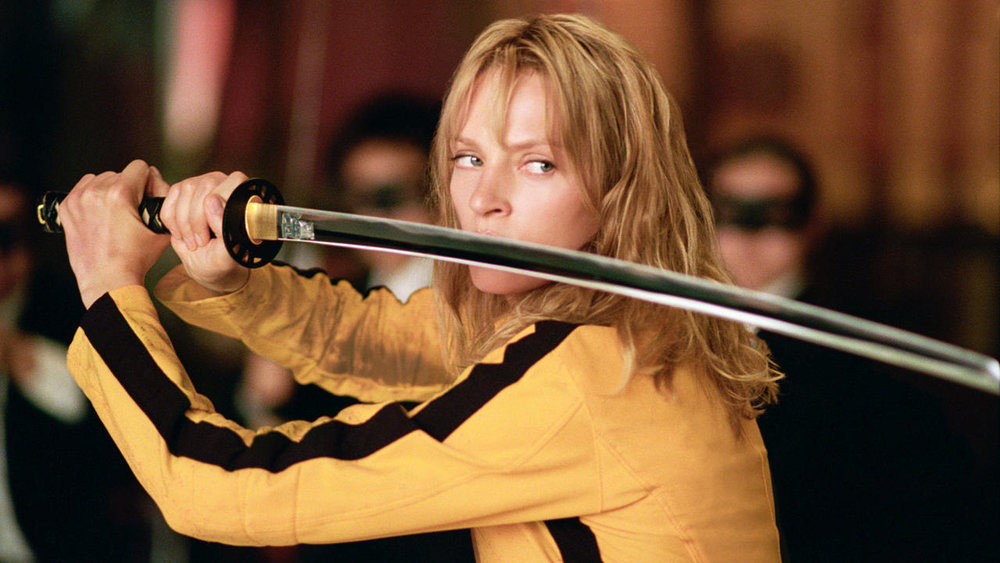“It’s in the Eyes”: Constructed Value of the Feminine Gaze in Amanda Knox
By Katie Elder | 13.11.2017
Amanda Knox. Dir. Rod Blackhurst, Brian McGinn. Netflix, 2016.
After four years in Italian prison, two murder convictions (and acquittals), a series of trials, interviews, and exhaustive and aggressive media coverage, a now 29 year old Amanda Knox sits rigidly in front of a stark, grey background. She appears exhausted. In footage and photographs from before her conviction, Knox is youthful, her cheeks rosy and her smile goofy. Now, in these more current images, she sits awkwardly in front of Rod Blackhurst and Brian McGinn’s camera. Her expression is serious, almost gaunt, and her hair is much darker and cropped. Her posture is uncomfortable, displayed against the austere background where she has been placed. At times, Knox is wary of the camera, regarding it tentatively or struggling for words. At other times, she is deliberate, almost exasperated, as she articulates her story. This is a woman whose entire life has been publicized, criminalized, avidly debated, and who hasn’t felt that she’s had the chance to vocalize her own story yet.
Simply titled Amanda Knox, Rod Blackhurst and Brian McGinn’s 2016 documentary (Netflix) follows a fad of cultural obsession with true crime and detective stories, such as NPR’s Serial (2014) or Netflix’s own Making a Murderer (2016). Amanda Knox details the trial and conviction of its titular character for the murder of her roommate, Meredith Kercher, while the two were on a school exchange in Perugia, Italy in 2007. Like many other works profiling open-ended cases with high public exposure, Amanda Knox questions the conviction and investigates possible faults of the judicial system, while simultaneously scrutinizing Knox’s defense. Is Amanda Knox guilty? Or is she innocent?
Perhaps even more than this, Amanda Knox is also interested in the different approaches with which this particular case has been presented, in how these stories are told. Blackhurst and McGinn combine police footage from the crime scene and Knox’s court trials, archival clips from news stories and press conferences, and videos and images of Knox herself from before the murder, with personal interviews with Giuliano Mignini, chief Italian prosecutor on Knox’s case, Nick Pisa, a British reporter who covered Knox’s trial, Raffaele Sollecito, Knox’s convicted co-conspirator and ex-boyfriend, and Amanda herself. Each of these accounts brings a singular representation of Amanda Knox, a new point of view and constructed image which makes it increasingly difficult for the filmmakers to reach a conclusion with regards to the veracity of the verdict.
In one of the most quoted essays on feminist film theory of all time, Laura Mulvey expresses the idea of on-screen males as “active” and on-screen females as “passive” (Mulvey 837). While men in cinema move, create, look, and prompt action, women in classic cinema connote a certain “to-be-looked-at-ness” (Mulvey 837). Mulvey labels this as the “male gaze” in film, males controlling the gaze of the camera and the viewer gaining “scopophilic pleasure” from what is in front of it (Mulvey 837). In Amanda Knox, this gaze is most certainly placed on Knox as she is berated and bombarded by police, the public, and the media. In interviews, Giuliano Mignini defends his certainty of Knox’s guilt, Nick Pisa criminalizes and sensationalizes her as a media object, Sollecito reminisces about their past and doubts Knox, and all of them continually project ideas of Amanda on to Amanda.
For the most part, Rod Blackhurst and Brian McGinn attempt to identify and challenge the one-sided or misogynistic representations of Knox in their examination of the ways that her trial is portrayed. The media’s representation of Knox is one of the representations in the documentary that appears to be most outwardly criticized by the filmmakers, particularly in regards to the sexism and misogyny that is displayed. Journalist Nick Pisa is ruthless in his criticism of Knox: promoting the headline “Foxy Knoxy” in his coverage of the trials, and portraying Knox as a sex-crazed maniac. He criticizes her sexualized persona and sneers at her nonchalant reaction to her roommate’s murder. In reference to crime scene footage of Amanda and her boyfriend at the time, Sollecito, leaning into each other and kissing after learning about Meredith Kercher’s murder, Pisa smirks: “I mean, who behaves like that? Of course she did it. She’s mad.”
Over the course of the documentary it becomes more obvious that these sensationalized sexual representations of Amanda only continued to escalate. Giuliano Mignini is convinced that the murder is a crime of passion, prying into Amanda’s sexual preferences and partners and scouring the crime scene for evidence linked to her sexual relationship with Sollecito or, possibly, with Meredith. Knox’s sexual history is publicized; her private journals from when she was in prison awaiting trial are leaked. Other male reporters join in on Pisa’s headlines and representations. In footage from the trial, one journalist can be heard criticizing Amanda’s appearance as she arrives in the courtroom by saying “they must not have make-up in prison.” Pisa himself even recognizes how, after a different man is suspected and tried for the same murder as Knox, the public loses interest as he is not a “young, sexy woman.” The draw of Amanda’s trial and conviction comes from her sex and sexualization; men actively placing ideas on to Knox as she remains passive.
Amanda Knox. Dir. Rod Blackhurst, Brian McGinn. Netflix, 2016.
While the film’s male subjects continually lock Amanda in their restricting gaze, Amanda Knox tries to give the impression that, for the first time, Knox is controlling her public persona within the documentary. The shots of Blackhurst and McGinn’s interview with Knox are some of the most striking in the film; visually poignant for a reason. For possibly one of the first times, alleged murderer Amanda Knox appears on-screen for an extended period of time to tell her own story. Blackhurst and McGinn place her against a bare background, removing any distractions that may affect the viewer’s interpretation of her words and allowing the viewer to make their own decisions in regards to her innocence or guilt. Be that as it may, while Amanda sits alone and unadorned in those few shots, every other piece of the documentary decorates her story in a different way. As mentioned previously, each individual interpretation projects a different story onto Amanda’s. Just like the men documented by Amanda Knox, Blackhurst and McGinn project their own judgments onto Amanda through each edit combining the shots and anecdotes of others.
In an attempt to expose the subjectivity of documentary film, the Amanda Knox trailers show just how prominent the influence of a filmmaker can be by expressing opposite judgements about her innocence. Netflix released two completely contradicting teasers for Amanda Knox: one titled “Suspect Her” and the other titled “Believe Her.” In “Suspect Her,” documentary footage is combined with dark music and the sound of a ticking clock, designed to make a viewer feel anxious. The trailer includes quick bursts of snapshots from the crime scene, along with quotes from Pisa and Mignini vilifying Knox; “I asked myself, is a monster responsible for this?” Mignini articulates to an uneasy viewer. In “Believe Her,” the exact opposite tone is conveyed with almost exactly the same footage. In contrast, this teaser features softer music and focuses on the sympathetic side of Amanda as she tells her personal story. “Suddenly I found myself tossed into this dark place,” she confesses to the viewer while verging on tears. “I was so scared.”
Both teasers utilize factual documentary footage but reveal completely contradictory sides to Amanda Knox: guilty versus innocent, murderer versus student, and criminal versus victim. Both teasers manipulate the emotions of the viewer and reveal how easy it is for filmmakers to project this gaze on to Amanda, to manipulate even her own telling of her own story, and for the documentary to avoid reaching ‘truth.’
Throughout the documentary, Blackhurst and McGinn allow their camera to consistently fixate on Knox’s eyes. The thumbnail chosen by Netflix to promote the film is an extreme close-up of Knox’s eyes. The grey background upon which Knox’s interview takes place is barren and, in contrast, Knox’s eyes are striking as the only spot of colour or expression next to her faded pink shirt and pale skin. More than once, other subjects in the film (like the viewer watching these interviews or Blackhurst and McGinn themselves) try to find innocence or guiltiness in Knox’s eyes; believing that some kind of factual evidence can be found in the way she looks, rather than the way she acts.
In one of the film’s most salient quotes, Knox realizes and challenges this herself, stating: “You’re trying to find the answer in my eyes when the answer is right over there,” referring to the other evidence surrounding the crime. “You’re looking at me, why? These are my eyes. They’re not objective evidence.” While providing exclusive access to Knox as an interview subject does (for the first time) allow Knox to become more “active” in her own storytelling, one must acknowledge how easily others can immobilize a subject by placing ideas upon it. With each perspective, Amanda Knox fluctuates between an average American college student and a seductive and crazed murderer. With each anecdote, Mignini and the legal courts, Pisa and the media, Sollecito and the public, and finally even filmmakers Blackhurst and McGinn form their own images of Amanda Knox; individually fixating on pieces of Amanda while often disregarding the actual person in front of them. If anything, Amanda Knox makes a viewer aware of just how powerful their gaze and the gaze of others can be, and just how difficult it is to find truth within multiple and varied representations of a subject. Amanda Knox’s eyes aren’t the ones we should be concerned about. It is our eyes, as viewers, which can be harmful.
Also Read
Click here for works cited in "“It’s in the Eyes”: Constructed Value of the Feminine Gaze in Amanda Knox"




